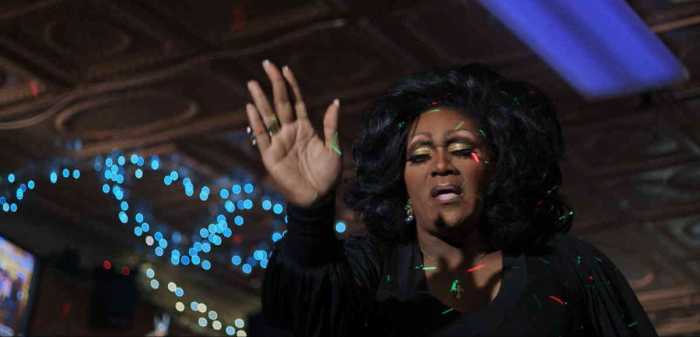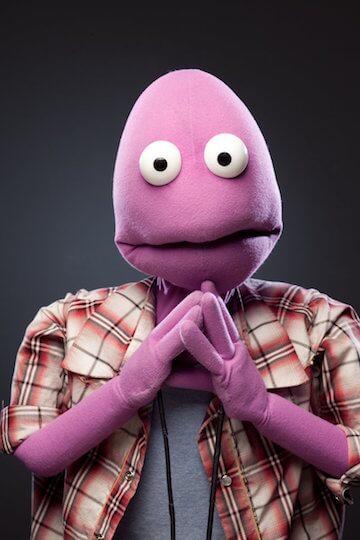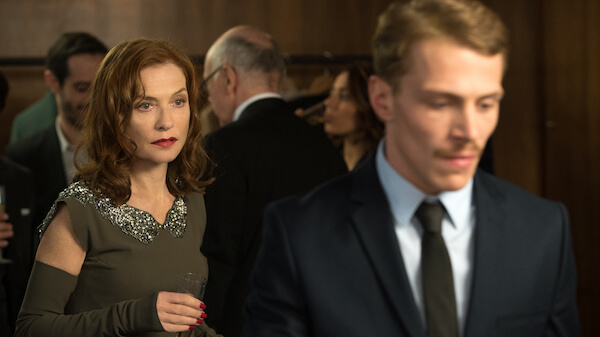Jérémie Renier and Marine Vacth in François Ozon’s “Double Lover.” | COHEN MEDIA GROUP
Out gay writer and director François Ozon’s new film “Double Lover” plays with his favorite twinned themes of secret lives and shifting identities.
Adapted from the Joyce Carol Oates novel “Lives of the Twins” (which the author wrote under a pseudonym), the film has Chloé (Marine Vacth) seeking help from Paul Meyer (Jérémie Renier), a psychiatrist, for what may be psychosomatic stomach pain. After a few sessions, Paul “cures” Chloé, and they quickly become lovers, eventually moving in together.
Discord arises, however, when Chloé accidentally discovers Paul has an identical twin brother, Louis Delord (Renier, in a dual role). What is more, Louis is also a psychiatrist. Uncomfortable about this information, Chloé, unbeknownst to Paul, makes an appointment with Louis. He is brusque with her but, like his twin brother, Louis gets under Chloé’s skin. She starts seeing him secretly on the side. Louis’ “treatment” is highly sexual; he initiates an affair with her, which complicates her life with Paul.
A woman’s obsession with identical twins more clever than compelling
“Double Lover” has some fun with its delicious premise that Chloé is emotionally satisfied with the benign, caring Paul, and sexually satisfied with the rough, bad boy Louis. There is even a dream sequence where Louis interrupts Paul having sex with Chloé. Louis kisses Paul sensuously before the twins join Chloé for a threesome. This erotic sequence plays on the fantasy of having twins as lovers as well as Chloé’s merging of the brothers’ identities in her sexual life stemming from her obsession with them.
In a therapy session with Louis, Chloé admits that when she is with him she thinks of Paul, and when she is with Paul she thinks about Louis. As she investigates the twins further, Chloé wants to know what caused them to forge their separate identities, including having different last names. They seem to only acknowledge the other when they have to. In time, the twins even confuse her — in one scene, she thinks she is with one when she is really with the other.
Ozon uses the film’s doubling framework to examine how and why people lead double or secret lives. Louis is smart enough to know that Chloé is involved with Paul. And Paul catches Chloé in more than one lie when she claims to be seeing another therapist though in fact she is seeing Louis. These moments fail, however, to create much dramatic tension. Even when Chloé wants to break things off with Louis, the few suspenseful scenes that follow have little impact. As Ozon shifts into thriller mode, “Double Lover” feels silly, even campy, especially since the bulk of the film has more of a magical realist tone with its dream and fantasy sequences.
The film certainly is atmospheric and full of symbols. Scenes set in the museum where Chloé is a security guard (she observes people, a twinning of a psychiatrist’s job) are formally composed. The museum’s flesh and blood works of art — large, amorphous blobs or an enormous tangle resembling limbs — are metaphors for Chloé’s thoughts and emotions at given moments.
Likewise, the use of mirrors and windows throughout the film reflect and repeat images of the characters to clever effect. Chloé is doubled in multiple mirrors as she enters Louis’ offices, suggesting multiple identities. Paul’s naked body is reflected in a bathroom mirror as well as upside-down in a shaving mirror as he’s showering, suggesting he has nothing to hide. Windows are used to reflect images of the characters, and at times the glass breaks to indicate a split or schism within one’s identity.
Ozon’s imagery may be obvious, but it is extremely rigorous and deliberate — as is his presentation of the doubling motif in the film. An early graphic shot of Chloé’s gynecological exam is mirrored with a shot of her eye. This idea is repeated with her mouth and her orgasm later in the film. A scene of Chloé walking up a spiral staircase to an appointment with Paul is mirrored with a reverse shot of her on the staircase seen from above. Throughout the film, Ozon employs split-screens. There are several characters playing multiple parts. (It would spoil that gimmick to discuss it further). A cat has a rare genetic makeup that is exclusive to twins. Even when Paul and Louis “swap” places or appear together, it is more delightful than confusing. To Ozon’s credit, it’s always clear which twin is which, except when it isn’t — and isn’t supposed to be.
Renier seems to relish playing Paul and Louis, making each twin distinct, while also making each attractive and seductive. Vacth has the trickier role as the woman in love with them both. She plays Chloé with considerable aplomb, making her sympathetic even when the story takes some hairpin turns that feel unearned.
Alas, despite all of the filmmaker’s skilled effects, Ozon fails to generate real emotion. Too much of “Double Lover” is skin deep. As much as Chloé must puzzle out the truth — of her emotions, of what is real or true — it all ends up feeling artificial and inauthentic. The film folds in on itself before it self-destructs. For all the pleasures of “Double Lover,” twice only yields half as much.
DOUBLE LOVER | Directed by François Ozon | Cohen Media Group | Opens Feb. 14 | Quad Cinema, 34 W. 13th St. | Quadcinema.com



































